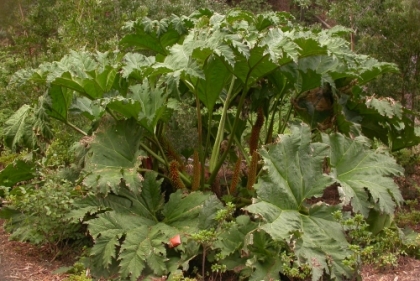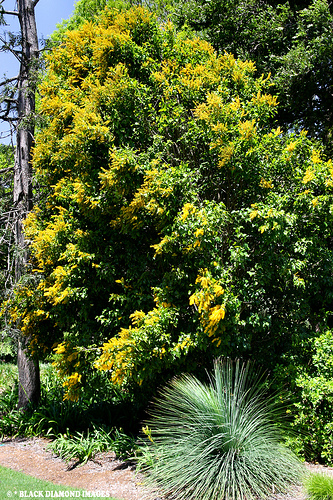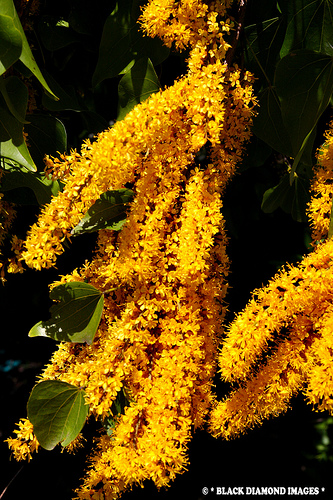Gunnera: the big guns of the plant world
July 20, 2010
Location: Various – South America, Tasmania, New Zealand, Hawaii
Over half a decade ago I was taking a stroll at the Cascade Gardens just outside the famous Cascade Brewery in Hobart, Tasmania and I saw a gigantic herb, the Giant Rhubarb (Gunnera manicata). This megaherb is one I would now certainly include in my Botanical Bucket List. Moral of the story – items in one’s Botanical Bucket List can be found, often times, in the most unexpected places.
Members of the genus Gunnera are truly worth seeing, and I am not just talking about the large ones (We’ll come to that). First and foremost, Gunnera belongs to a family of it’s own, the Gunneraceae and depending on who has the last say at the Angiosperm Phylogeny Group, Gunnera might be the only genus in this family. In addition, the Gunneraceae is a largely Gondwanan family of plants, i.e. it belongs to ancient plant lineages that originate from the Southern Hemisphere. The Gondwanan ancestry of Gunnera is evident in the distribution of it’s members in Africa, New Zealand, South America and Tasmania.
There are 40-50 species of Gunnera, so to make sure we don’t have to live for over a hundred years to find them all, it might be prudent to focus on the ones really worth seeing – the largest of the lot. I am obviously making a value judgment here.
Fortunately, one of the largest Gunnera species is possibly also the easiest to see, as my experiences go. I imagine that most temperate botanical gardens, and possibly even many urban gardens will have specimens of the Giant Rhubarb (Gunnera manicata). This magnificent herb from Brazil has leaves up to 2m wide and over 3m long.
The harder to see species are no less interesting. G. peltata, from Chile, supposedly grows to a height of over 5 m. Yet another, G. magnifica, is alleged to have leaf buds 60cm long and 40 cm thick, possibly earning the title of the plant with the largest leaf bud.
The Big Guns of the plant world are always worth seeing!
Status: Seen in cultivation the gigantic but by no means the largest Gunnera manicata. Also seen a small native Tasmanian species, Gunnera cordifolia.
Japanese restaurant on a giant tree
February 1, 2010
Location: Japan (see specific directions see here)
The internet is one of the best places to stimulate excitement and desire. The moment I laid my eyes on this photo I knew I had to visit it. It was a restaurant sitting on the top of a gigantic tree!
Look at the size of the cars in comparison to the tree trunk. If this is a real tree I can’t help but wonder what magical forest with similar sized trees must have surrounded it in times past. I am beyond curious to find out what sort of tree it might be too. Even if it is an entirely man-made structure (which I seriously doubt), I think it is still worth a visit.
Still I think I’m going to have to see it in the flesh before I believe it!
Status: Yet to See
Living bridge in India: Ficus elastica
January 28, 2010
Location: Northeast India, Cherrapungee.
I’ve got to see this living bridge in India. It was practically woven out of the fallen trunks of the betel nut palm (I am assuming Areca catechu) and the roots of the Indian rubber tree or Rubber fig (Ficus elastica). Unlike other man-made bridges, this living bridge pracically gets stronger with age, as the fig’s anatomizing roots become thicker and stronger.
I think this living bridge is a sterling example of how humans can live harmoniously with the natural environment.
Status: Seen Ficus elastica on numerous scores but certainly not in such a form!
Additional info on the living bridge
Buxbaumia, Bug-on-a-stick
January 25, 2010
Bug-on-a-stick, Buxbaumia. I have no idea what gives this moss it’s common name but even the scientific name seems to ring of ‘bug’. Other common names for this moss include Bug moss, Humpbacked elves, or Elf-cap moss.
There are about 12 species of Buxbaumia worldwide and the genus comes under it’s own family, the Buxbaumiaceae. In Tasmania, Australia where I currently reside, there are allegedly 2 species of Buxbaumia, B. aphylla and B. tasmanica. I have seen neither. Frankly I’ll be overjoyed to see ANY Buxbaumia.
Although this plant is not a flowering plant like what the bulk of this blog is going to feature, it comes under my list of plants to see before I die because it has an:
1.Interesting life form
It is a botanical curiosity in the moss world. Unlike most other mosses, it does not have any apparent leaves. When not in ‘fruit’, the plant consists simply of algae-like filaments.
Because of the very unique algal-like existence that it exhibits, bryologists (or plant scientists who specialize in mosses and related plants) used to think that mosses like Buxbaumia was an evolutionary link between algae and and the first bryophytes.
However, more recent research suggests that Buxbaumia is as ancient a lineage of mosses as previously thought and that it’s algae-like characteristics is a derived trait.
2. Interesting fruit morphology
The ‘fruit’ or more accurately, the sporophyte or capsule, has a very unique flattened shape, which makes it instantly recognizable once seen. This unique capsule structure has been interpreted as being a transitional between that of primitive mosses and modern ones.
Status: Yet to see
Links to info on Buxbaumia:
Pelliciera rhizophorae (Tea mangrove)
January 23, 2010
The tea mangrove (Pelliciera rhizophorae) is a mangrove tree that belongs to a rather obscure botanical family, the Tetrameristaceae. Mind you, this is the current Angiosperm Phylogeny Group concensus. Other botanist have linked to to the tea family (Theaceae) or even tried placing it into a family of it’s own, the Pellicieraceae. In any case, uniqueness characterizes this obscure mangrove tree.
I first saw a photo of Pelliciera rhizophorae in the classic textbook, The Tropical Rain Forest by P. W. Richards, and I was hooked. Pelliciera rhizophorae has a very strongly swollen and fluted trunk, presumably an adaptation to the mangrove conditions which in it makes it’s abode. The fruits are very distinctive, being shaped like a top.
It is probably among one of the least widespread of mangrove trees, an interesting phenomena given the efficacy of ocean currents as a propagule dispersal mechanism. According to P. B. Tomlinson in The Botany of Mangroves, the species has a limited distribution on the coast of central and northern South America and also on the Atlantic coast. It was allegedly found in the Old World tropics before as well.
The rarity of the tree is quite evident – there are few pictures of it online. Rafael J. Araujo from Flickr is a researcher of mangrove habitats and has kindly permitted me to use some of his excellent photos of Pelliciera. I can’t wait to take some shots myself!
Status: Yet to see
References
Calderón-Sáenz, E. (1984). Occurrence of the mangrove, Pelliciera rhizophorae, on the Caribbean Coast of Colombia with biogeographical notes. Bulletin of Marine Science 35, 105-110. [pdf may be downloaded here]
Rationale for the blog
January 16, 2010
Hi world!
Welcome to my new blog. I thought I might set up a blog on a very specific topic: to list all the plants I’d like to see before I die. I guess it is also a means to track my progress.
Happy botanizing.








